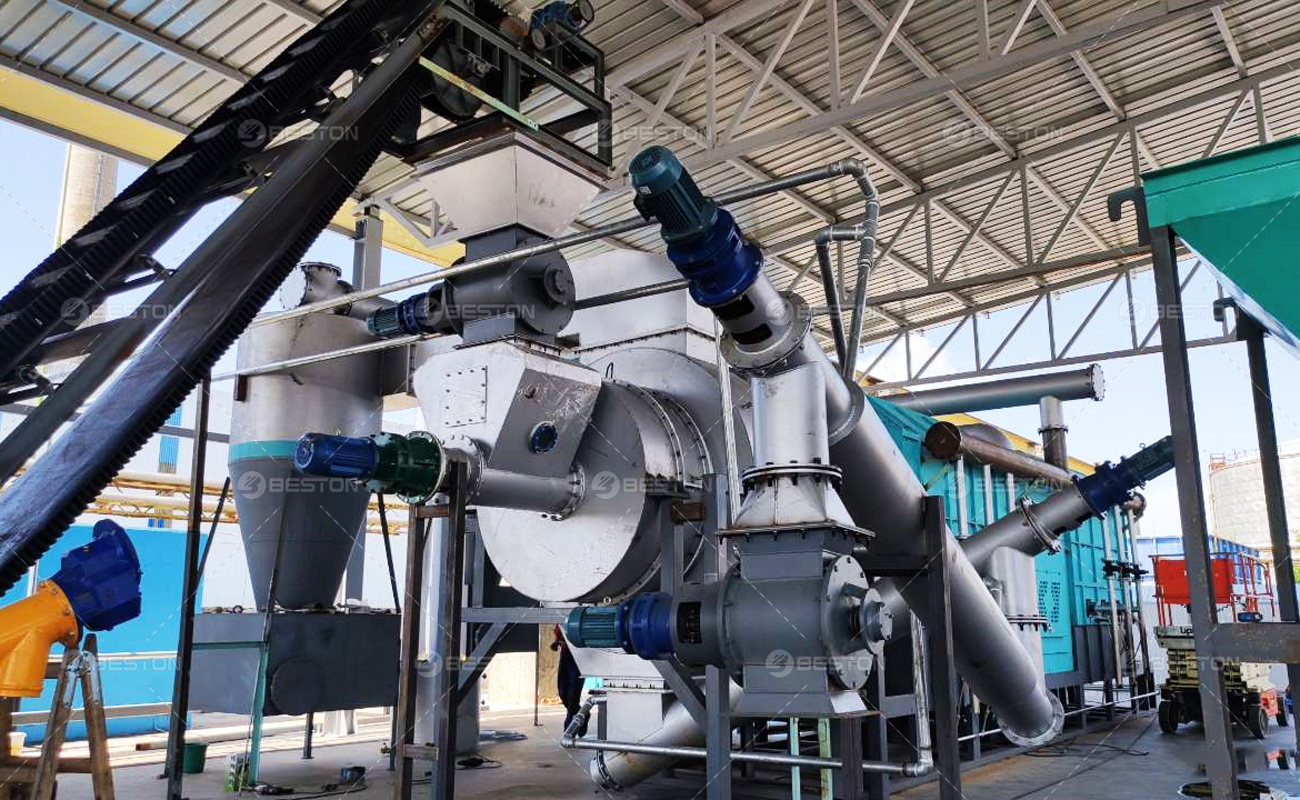Introduction
Organic food waste has become an escalating concern, prompting a critical reevaluation of disposal methods. Conventional practices, such as landfilling and incineration, not only fail to address the environmental impact but also miss an opportunity to turn waste into a valuable resource. In this context, the Charcoal Making Machine emerges as a revolutionary solution, promising effective waste management and environmental benefits.

Understanding Organic Food Waste
Types of organic food waste
In the realm of organic waste, diversity reigns. Kitchen scraps and agricultural waste collectively contribute to a substantial environmental burden. The challenge lies in managing this diversity for optimal disposal.
Challenges posed by organic waste
The decomposition of organic matter in landfills generates methane, a potent greenhouse gas. Simultaneously, the sheer volume of waste strains existing disposal infrastructure. Recognizing these challenges is crucial to appreciating the need for innovative waste management solutions. Therefore, a charcoal maker machine with organic biomass pyrolysis technology can be used to treat these wastes at this stage.
The Environmental Impact of Traditional Disposal
Landfill problems and their consequences
Landfills, often the default destination for organic waste, present a host of issues. From soil contamination to the release of harmful gases, the impact on local ecosystems and air quality is profound.
Incineration drawbacks
Incinerating organic waste, while reducing volume, introduces its own set of problems. Air pollution and resource depletion are significant drawbacks, making it clear that traditional methods fall short of sustainable waste management.
Introduction to Charcoal Making Machine
The charcoal production machine marks a departure from traditional waste disposal methods. This innovative technology transforms organic waste into a valuable resource—charcoal, offering a sustainable alternative with positive environmental implications.

Operational Mechanism of Charcoal Making Machine
Collection and sorting of organic waste
The process initiates with the meticulous collection and sorting of organic waste. This crucial step ensures that only suitable materials enter the charcoal making machine, optimizing the efficiency of the subsequent steps.
Pyrolysis process in the machine
Within the machine, organic waste undergoes pyrolysis—a thermal decomposition in the absence of oxygen. The careful control of temperature and duration influences the byproducts, including gas and liquid forms, ensuring a controlled and efficient conversion process.
Charcoal formation and collection
The culmination of the process yields high-quality charcoal, devoid of harmful substances. This charcoal is then collected, ready for application in various sectors, creating a closed-loop system for organic waste. For example, you can use a coconut shell charcoal machine to process the organic waste generated from coconut processing.
Environmental Advantages of Charcoal from Organic Waste
Reduced methane emissions
By diverting organic waste from landfills, the charcoal making machine plays a pivotal role in reducing methane emissions. This not only mitigates its impact on climate change but also addresses a significant contributor to the greenhouse effect.
Soil enrichment and carbon sequestration
The produced charcoal proves to be an exceptional soil conditioner, enhancing fertility and promoting carbon sequestration. This dual benefit not only aids in sustainable agriculture but also contributes to overall ecosystem health. As a professional carbon sequestration solution provider, you can consult Beston Group for more relevant information.
Comparison with other waste disposal methods
When pitted against traditional methods, the charcoal making machine stands out in terms of environmental sustainability. Its capacity to convert waste into a valuable resource underscores its potential to redefine waste management practices globally.
Applications and Future Implications
Utilization of charcoal in agriculture
The charcoal produced by the machine serves as a potent soil amendment, fostering healthier plant growth while reducing reliance on chemical fertilizers. This application underscores the potential for the machine to contribute to sustainable agricultural practices.
Potential for community-based initiatives
The scalability and simplicity of the charcoal making machine present opportunities for community-based waste management initiatives. Localized solutions can address specific waste challenges, simultaneously fostering a sense of environmental responsibility within communities.
Integration with existing waste management systems
Such a biomass pyrolysis plant doesn’t seek to replace existing waste management systems but rather complement and enhance them. Its integration into broader strategies holds the potential to revolutionize how societies approach the intricate challenge of organic waste management.
Conclusion
In conclusion, the charcoal making machine represents a transformative approach to organic food waste recycling. Its operational efficiency, coupled with its positive environmental impact, positions it as a cornerstone in sustainable waste management practices. As the world grapples with escalating environmental challenges, embracing innovative solutions like the charcoal making machine becomes paramount for a greener and more sustainable future.